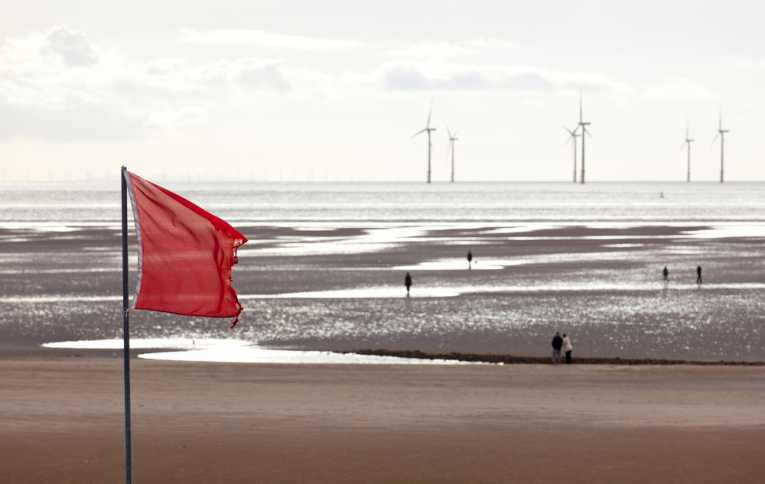For those looking for the entertainment value of a news-story packed with combustible ingredients, you'd be hard-pressed to do better than throwing a US property billionaire, a Scottish Nationalist, golf clubs and gigantic wind turbines into a blender - and hitting the mix button. But while the story of Donald Trump's opposition to wind farms conjures up wonderful images - of The Donald tilting at windmills, golf club in hand - there is a more serious issue to contend with. Wind turbines, whether onshore or off, are a bold visual statement of intent towards clean energy. But can they deliver the kilowatt-hours?
Donald Trump versus the Environment - the re-run?
The tale starts in a predictable enough fashion. Some 10 years ago, Donald Trump, the American property tycoon, decamped to his ancestral Scottish home, bought some land, and kicked off the development of the 'world's best golf course', on the Aberdeen coast. The little matter of building over a Site of Special Scientific Interest was only a minor impediment. But now Trump's luxury golf resort plan has rubbed up against a new environmental snag - plans to develop an offshore wind farm, within view of the moneyed golfers.
Unsurprisingly, Mr Trump was not impressed. "With the reckless installation of these monsters, you will single-handedly have done more damage to Scotland than virtually any event in Scottish history," Trump wrote recently in a letter to Alex Salmon, the Scottish Nationalist first minister. He has threatened to pull the plug on his plans, and confirmed yesterday he wanted to give evidence to the Scottish parliament, when a committee there reviews the plans for the European Offshore Wind Deployment Centre. His staff have also confirmed to Scotland's Herald that Trump's money and resources are now being funneled into local anti-wind farm groups.
WWF wades into offshore wind debate
So Donald Trump has environmental-policies and climate-change action firmly in his sights, does he? That's certainly not unheard of from wealthy businessmen. The World Wildlife Fund saw the issue in such black-and-white terms. 'Given the urgent need to tackle climate change, it is deeply depressing to hear in detail how Donald Trump intends using his vast wealth to try to kill-off one of the clean, green solutions available to the people of Scotland', said Dr Dan Barlow of WWF Scotland.
But others have expressed doubts about wind turbine development too, of late. And on grounds that are a bit firmer than fretting over the view afforded to golf club members. On the one hand, the mammoth rush of turbines into the waters off the coast of Europe - and beyond - is hitting snags all round. In Germany, where offshore is becoming a vital crutch to a power-grid badly missing shut-down nuclear reactors, huge offshore wind farms in the North Sea have been left stranded.
Teething trouble or windy woes?
The Amrumbank offshore wind farm, for example, is sitting idle, waiting on a farm-to-shore connection grid that is months behind schedule. The operator E.on, is warning it will hold back further wind investment unless the slow construction of power connections is sped up. And offshore turbines already installed may be threatened by another insidious hazard - current scour that causes fatigue, and even failure in turbines, if left unchecked.
While the problem has been known about for some time --– and defenses put in place --– new research suggests those protective measure may not always work. The research, carried out by the Technical University of Denmark, has found that so-called 'horseshoe vortices' form around the turbine poles, and these can cause the scour protection to collapse.
And beyond these technical hitches, many are wondering why such huge sums of money are being thrown at a source of energy that can be so intermittent. If the wind isn't blowing, surely we'll still need coal, or oil or gas power stations to 'back the wind up' - negating much of the targeted reduction in emissions. All those critiques may be valid in their own right, but perhaps such criticism as missing the bigger picture.
Turbines to float out of sight
Like any new major engineering exercise, the installation of wind power offshore is bound to run up against teething problems. That's doubly true when the push to get wind online is becoming harder, thanks to inaction on so many other carbon-emission reduction fronts. Wind power is bearing a big burden because of the lack of will to properly tackle emissions on other ways - through energy efficiency, or reducing energy consumption overall.
But these ongoing technical challenges can be fixed by technical innovation. For example, a Norwegian company is has developed a prototype floating wind turbine. That could nix the issue of scour protection, and allow turbines to be placed out of sight of the coast - and so possibly removing Donald Trump's scowl, too.
Thinking big to grasp renewables promise
And though wind is a temperamental energy source - like most renewables - there are solutions here too. Energy storage - whether through improved battery technology, or using pumps to store the wind's energy in water or air reserves - can help smooth the choppy nature of wind power. And thinking even bigger, an international renewables grid could power a whole continent. Such a grid has been proposed for Europe.
It could incorporate intelligent power loading to balance demand-and-supply. And the power diversity of power sources would be allow lulls in generation to be offset against peaks in others. So the grid could weave together solar power from the deserts, wind and wave power from the coasts and the geothermal power from the earth's buried heat. Perhaps someone needs to tell Mr Trump to shift his gaze - from the putting tee to the bigger picture. And to put his vaunted imagination and money into solutions, not nimbyism.










